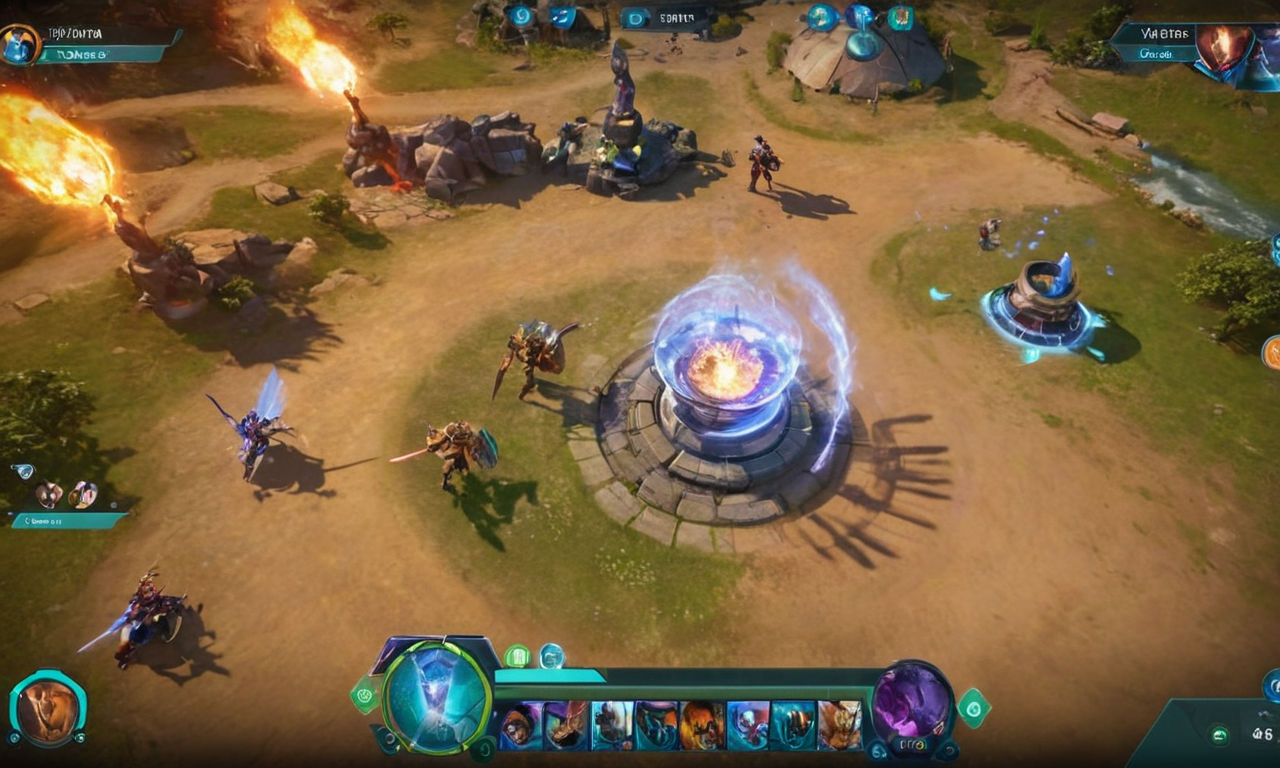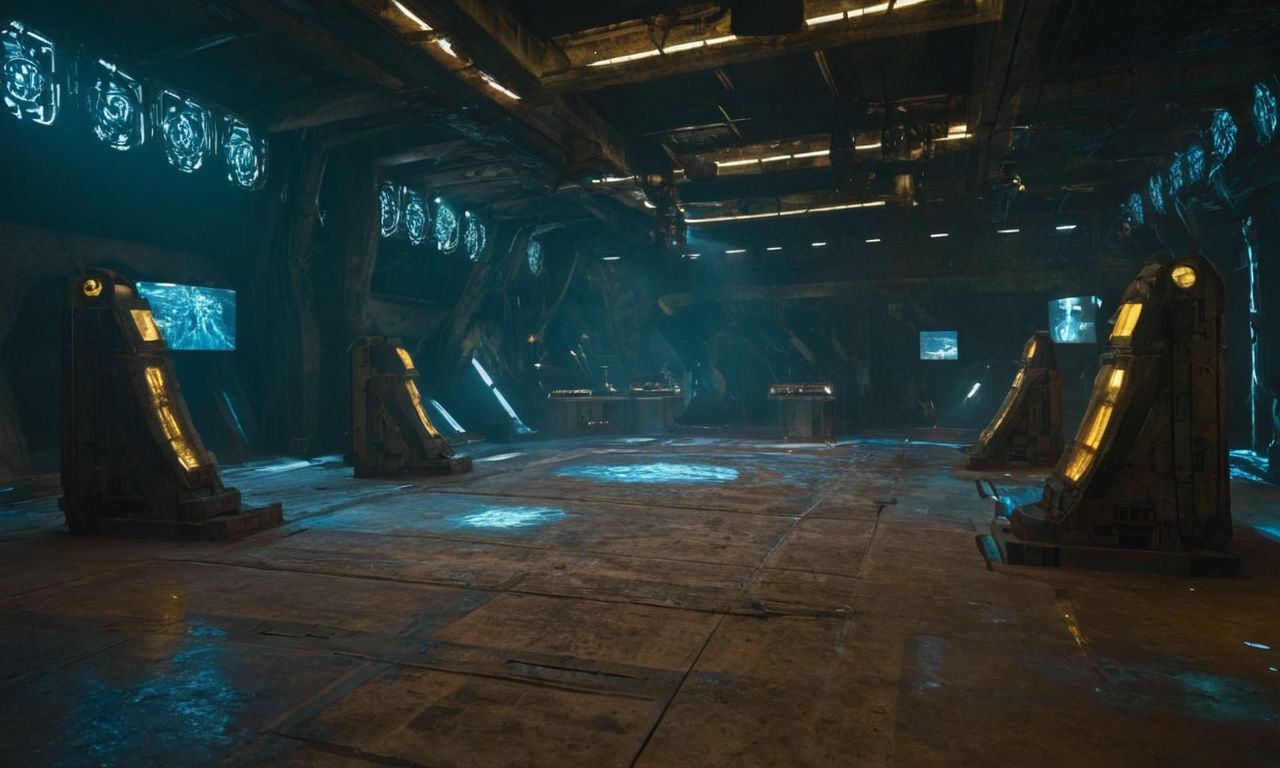Introduction
In the realm of multiplayer online battle arena (MOBA) games, EA made a notable entry with Dawngate, seeking to carve a space in a market dominated by the likes of League of Legends and Dota 2. Dawngate's journey, however, was a tumultuous one, leading to its eventual shutdown. This article delves into the rise and fall of Dawngate, shedding light on its significance within the competitive MOBA landscape.
The Emergence of Dawngate
Dawngate, developed by Waystone Games and published by EA, introduced a new flavor to the MOBA genre. With features like a dual-lane map, role-based item system, and a focus on storytelling through the game's lore, Dawngate aimed to differentiate itself from established titles. However, despite these innovations, the game faced challenges in setting itself apart from the fierce competition posed by League of Legends and Dota 2.
Comparison with other popular MOBAs
While Dawngate brought fresh ideas to the table, it struggled to gain a substantial player base compared to the giants of the MOBA genre. League of Legends' accessibility and diverse champion pool, along with Dota 2's deep gameplay mechanics and competitive scene, posed significant hurdles for Dawngate's growth.
What Dawngate Offered Players

Dawngate sought to captivate players with a blend of familiar MOBA elements and unique features. The game's character design emphasized diversity and depth, offering intriguing champions with distinct playstyles. Moreover, Dawngate's lore-rich world and community-focused approach aimed to create a more engaging and immersive experience for players.
Character Design: Dawngate's roster of shapers, each with their own backstory and abilities, provided players with a variety of strategic options and play opportunities.
Lore and Community Engagement: The game's narrative-driven approach and interactive community events aimed to foster player involvement beyond just gameplay, creating a sense of belonging and investment in the Dawngate world.
Through its distinctive offerings and community-centric design, Dawngate endeavored to create a space for itself in the competitive MOBA landscape. However, despite its ambitions and innovations, Dawngate ultimately faced insurmountable challenges that led to its closure, marking a bittersweet chapter in the history of EA's MOBA endeavors.
Rise and Fall: The Story of Dawngate
The rise and fall of Dawngate, EA's ambitious venture into the MOBA genre, is a tale of promise and challenges. Dawngate was developed by Waystone Games, a subsidiary of Electronic Arts, with the aim of offering a fresh take on the popular MOBA formula dominated by titles like League of Legends and Dota 2. Launched in beta in 2013, Dawngate garnered attention for its innovative gameplay mechanics and engaging lore. However, despite its initial fanfare, Dawngate struggled to gain a significant foothold in the competitive MOBA market.
Factors contributing to the eventual shutdown of Dawngate included fierce competition in the MOBA genre, difficulties in attracting and retaining a large player base, and challenges in differentiating itself from established titles. Despite efforts to iterate on the gameplay experience and community feedback, Dawngate failed to reach the level of success necessary to sustain its development in the long term. In November 2014, EA announced the decision to close Dawngate, citing a lack of progress towards making the game a viable product.
Reasons Behind Dawngate's Shutdown

The decision to shut down Dawngate was multifaceted, with EA citing several primary reasons for the closure. Financial considerations played a significant role, as sustaining the development and maintenance of a MOBA requires substantial resources. With Dawngate failing to achieve the desired player retention and monetization levels, EA faced challenges in justifying further investment in the project.
Additionally, the competitive landscape of the MOBA market posed a formidable barrier to Dawngate's success. The dominance of established titles like League of Legends and Dota 2, with their large and dedicated player bases, made it challenging for a newcomer like Dawngate to carve out a significant share of the market. Despite the game's unique features and strong community support, these factors ultimately contributed to the decision to cease development.
Impact on the MOBA Genre
Dawngate may have been short-lived, but its impact on the MOBA genre reverberated beyond its closure. The game's legacy lies in its innovative design choices, such as its dual-lane map and emphasis on storytelling within the game world. These elements sparked discussions within the MOBA community and inspired developers to explore new ideas in the genre.
However, Dawngate's closure also highlighted the challenges of launching a successful MOBA in a market dominated by established giants. The closure of Dawngate served as a cautionary tale for developers entering the competitive MOBA space, underlining the importance of strategic differentiation, substantial resources, and a strong player base for long-term sustainability.
In conclusion, while Dawngate's shutdown marked the end of an ambitious project, it also left a lasting impression on the MOBA industry, shedding light on the complexities and pitfalls of competing in a genre defined by fierce competition and loyal player communities.
Learning from Dawngate: Challenges in the MOBA Market

Entering the highly competitive market of MOBAs, such as EA did with Dawngate, presented a myriad of challenges. Understanding the key difficulties faced by new entrants sheds light on the complexities of the gaming industry landscape. Here are some insights into the challenges that Dawngate encountered and the lessons learned from its closure for future MOBA developers:
Fierce Competition: Dawngate faced stiff competition from established titles such as League of Legends and Dota 2, which already had massive player bases and longstanding support from the gaming community. This highlights the importance of differentiation in gameplay mechanics, art style, and overall player experience for new MOBAs to stand out in a crowded market.
Player Adoption and Retention: Building a player base is critical for the success of any MOBA. Dawngate struggled to attract and retain players, which ultimately impacted its longevity. This emphasizes the need for effective marketing strategies, community engagement, and ongoing updates to keep players interested and invested in the game.
Monetization Strategy: A sustainable monetization model is essential for the longevity of a MOBA. Dawngate's approach to monetization may have contributed to its closure. Finding the right balance between offering valuable in-game purchases without compromising the gameplay experience is crucial for new MOBAs to thrive in the competitive market.
Lessons Learned for Future MOBA Developers
Innovative Gameplay: To captivate players, new MOBAs must innovate and offer unique gameplay features that set them apart from existing titles. Learning from Dawngate, future developers can focus on introducing fresh mechanics that appeal to both casual and hardcore players.
Community Building: Cultivating a strong and engaged community is vital for the success of a MOBA. Developers can take cues from Dawngate's community management strategies, emphasizing transparency, communication, and responsiveness to player feedback to foster a loyal player base.
Iterative Development: Continuous updates and improvements are key to keeping a MOBA relevant and engaging. Future developers can adopt an iterative development approach, releasing regular patches, balancing gameplay elements, and introducing new content to keep the game fresh and exciting for players.
Conclusion
In retrospect, Dawngate's journey serves as a cautionary tale and a source of valuable insights for the MOBA gaming industry. Reflecting on the significance of EA's venture into the MOBA market, it becomes evident that the closure of Dawngate underscores the challenges of establishing a new MOBA in a market dominated by giants.
Dawngate may have faced an untimely demise, but its legacy lives on as a testament to the complexities and uncertainties of game development and market dynamics. Despite its closure, Dawngate's brief presence had a lasting impact, reminding both players and developers of the risks and rewards inherent in the ever-evolving landscape of competitive gaming.
In conclusion, the closure of Dawngate offers a poignant narrative of ambition, perseverance, and the unforgiving nature of the gaming industry. As the MOBA genre continues to evolve, the lessons derived from Dawngate's story provide a valuable roadmap for future developers looking to navigate the challenges and opportunities that lie ahead in the dynamic world of multiplayer online battle arenas.



